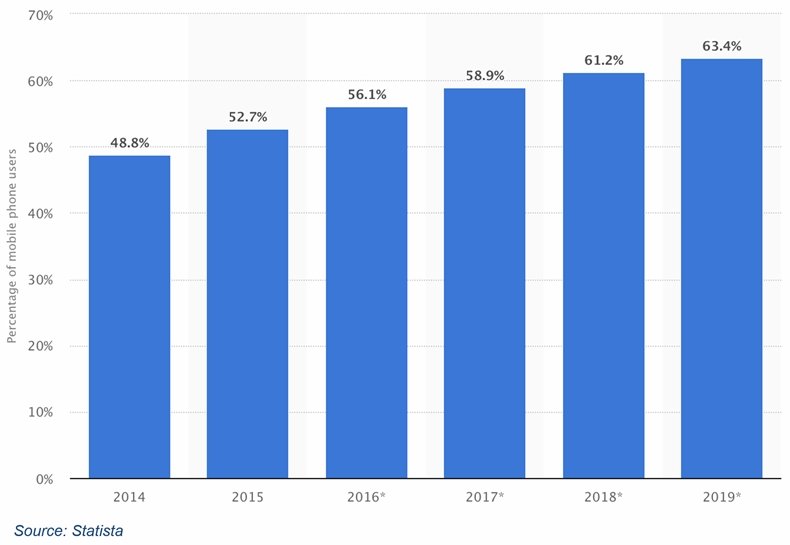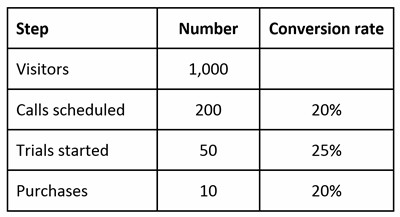When planning a new digital marketing campaign, you have to consider various steps to ensure that it's successful and efficient, and that you use your budget optimally. You don't want to waste money or time.
In this article I've outlined five important steps you need to take before launching your next digital marketing campaign.
1. The Goal of the Campaign
First of all, you have to think about the scope and purpose of the campaign: What is your aim? Which are the goals you want to achieve? What are your KPIs (key performance indicators)?
Is your campaign's main goal brand awareness? Is it conversions? Maybe a combination?
Defining the purpose of the campaign will help you in selecting the best acquisition channels for driving traffic to landing pages, forms, or videos to watch. It will also determine budgeting, in that it will determine performance-marketing pricing model: from CPM (cost per mille) to CPC (cost per click) or CPE (cost per engagement), CPI (cost per install), or even CPA (cost per action/acquisition) and CPL (cost per lead).
If we want to create a campaign for brand awareness, the CPM model is likely the best to use. If instead we want to drive traffic to a landing page, we would use the CPC model, and if we are creating an acquisition campaign for app download or some affiliate marketing activities, we might use the CPA or CPI model. (More about ad pricing models later).
2. Optimization
Even if you set up an amazing acquisition campaign, but then the user experience on a landing page is poor, your conversion rate will likely suffer significantly.
Foremost, I would highlight the importance of not driving traffic to the homepage of your website. Instead, send traffic to a specific landing page, optimized in terms of wording and images for a specific cluster of people or marketing personas.
For example, if you are launching a Facebook Ads campaign, the ads should show certain images and use wording based on the targeted audience. Moreover, the landing page should as well: If you are using a photo of sunglasses on your ad, for instance, use it also on your landing page—or at least a similar one. Doing so will help your conversion rate through the funnel.
The same principle applies in mobile optimization, which is nowadays a must for every website or landing page we create. Just look at the mobile phone Internet user penetration worldwide from 2014 to 2019 to understand the importance of optimizing your content for mobile devices:

3. Define the Metrics
Depending on the type of campaign and its main goal, you will have to define which metrics need to be taken into consideration.
As noted earlier, if your campaign goal is brand awareness, you can base your budget on CPM: what you will pay for every 1,000 ad impressions.
CPMs vary by industry, location, and ad placement.
For example, Facebook provides several ad placements: Feeds, Instant Articles, In-Stream Video, Right Column, and Marketplace. Its Instagram options are Feeds and Stories. Instagram has the highest CPM rate ($6.75 per 1,000 impressions), according to a study by Kenshoo:

If your campaign's goal is to send users to a specific landing page, it is better to allocate your budget on a CPC basis. In this case, you would be optimizing your budget for actual clicks, not just reach and impressions.
And if your main objective is conversions, for instance a sign up on a platform or a phone-call booking, you should create and manage a CPA campaign. If your campaign is to drive app downloads, then it would be based on CPI.
There are also ad pricing models specifically for e-commerce, such as CPO (cost per order), which is calculated in this way:

Once you have defined the ad pricing models, it is crucial to also calculate CAC (customer acquisition cost) and LTV (lifetime value).
CAC be calculated in several ways, but here's a generic formula:

CAC can help you understand how much you are paying to acquire a new customer and how many items or services you have to sell in order for your business to be sustainable or profitable.
Once you've calculated the CAC, it is important also to take in consideration customer LTV, "the average revenue that a customer generates before they churn, offset by gross margin." A basic formula is this:

The final step would be to calculate the ratio between the CAC and the LTV. Klipfolio states that "an ideal LTV:CAC ratio should be 3:1" and that if the ratio is less, for instance 1:1, you are spending too much on acquisition.
4. Track Everything
You have defined the goals of the campaign, the ad pricing model, the metrics, and also the customer acquisition cost and lifetime value. It's time to put tracking in place.
If you don't track what is happening on your website, landing page, or e-commerce site, you will lose a lot of crucial data: number of visitors, retention rate, bounce rate, conversion rate, and much more.
One important analysis to take in consideration, for instance, is funnel analysis. You have to track all the steps you've put in place for users and customers, from acquisition to activation and purchase.
To do so, you can use Google Analytics data in a spreadsheet to come up with something basic like this:

Even with such a simple structure, you have an overview of the conversion rates at each step and can understand which is a priority area to optimize in order to increase sales.
5. Remarketing
In relation to tracking, another really important step is to install a tracking pixel for remarketing activities. A tracking pixel is a little piece of code, invisible to the user, "that tells Ad Exchange to save visitors' cookies to your 'Homepage' list," as Google defines it.
This means that as a user visits your website or a specific landing page, his or her cookie is added to a custom audience list that you can use in the future to create a targeted campaign to get back those users who visited your website but didn't purchase.
Thanks to a remarketing pixel and a custom audience that include visitors who already showed interest in your product or service, you can create a specific offer for only those people. For instance, you can show them a banner that points to a special discount offer page that is accessible only to that custom list of people.




